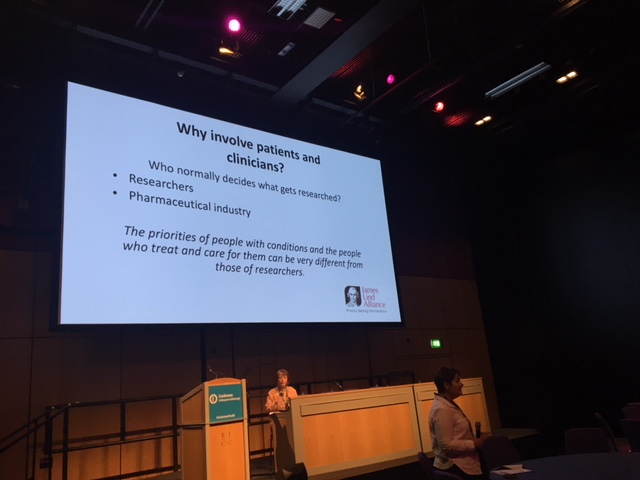Both stakeholder engagement and priority setting seem to be at the heart of what Cochrane is trying to achieve in the coming years. Those amongst us who have been passionate about both these aspects are delighted to see this emphasis from the organisation.
The annual Cochrane Colloquium this year in Edinburgh celebrated its 25 years birthday with the theme: Cochrane for all: making the Colloquium a 'Patients Included' event. It is somewhat completely by coincidence and pure luck that I had the fantastic opportunity to be involved in supporting a workshop that had both these elements heavily intertwined together in line with the colloquium´s theme. The Cochrane Priority Setting Methods Group, the James Lind Alliance (JLA)and the PRioRiTy Study group joined forces to share their experiences in incorporating stakeholder engagement as a central part of setting research priorities.
Mona Nasser a co-convenor of the methods group kicked off the session by giving an overview of the existing approaches for setting priorities for research and how stakeholder engagement can range from having no or minimal input to being fully immersed and part and parcel of the process. This was followed by Caroline Whiting explaining the very successful JLA priority setting partnership model (PSP) that brings together patients and clinicians to jointly identify and agree on important unanswered questions that matter.
Finally, Patricia Healy shared the experience of using the JLA model of priority setting in a novel way in the PRioRiTy study which identified priorities for methodological research in trial recruitment. Patricia described how they used a modified PSP to enable a comprehensive, rigorous and inclusive priority setting process for research methodology with participation from key stakeholders, including members of the public to identify how to improve the process of recruiting people to randomised trials.
We had then planned an interactive exercise where the workshop participants would get a chance to look at three different articles describing different types of priority setting approaches and determine the level of stakeholder engagement undertaken in each example, working through a worksheet with a pre-designed framework that would assist them with this work. To our absolute delight the participants wanted instead to have a longer discussion and really what felt like an intimate chat with all of us. There was also plenty of discussion from #Beyondthroom thanks to the wonderful @sally_crowe, who ensured that our workshop was also inclusive. People genuinely shared their own experiences with engaging with stakeholders and priority setting and we all left with an optimistic sense for the future that both these elements have become now a cornerstone for the work of Cochrane and beyond.
Tarang Sharma, Editorial Officer, Editorial and Methods Department, Cochrane Central Executive, Cochrane, (formerly Technical Officer, World Health Organization Regional Office for Europe)

